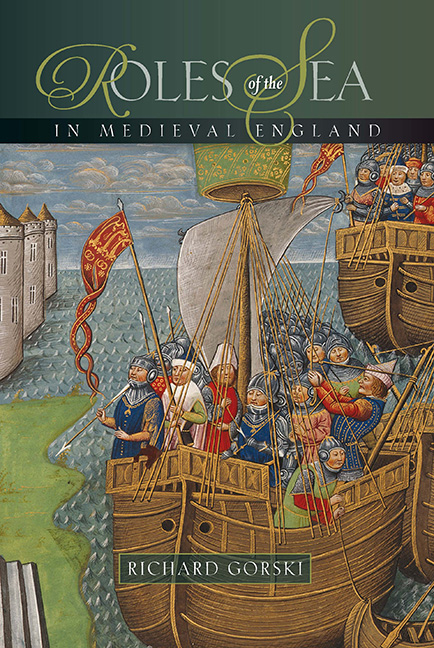Book contents
- Frontmatter
- Contents
- List of Contributors
- Map
- 1 Roles of the Sea: Views from the Shore
- 2 Changes in Ship Design and Construction: England in the European Mould
- 3 The Value of the Cinque Ports to the Crown 1200–1500
- 4 The Contribution of the Cinque Ports to the Wars of Edward II and Edward III: New Methodologies and Estimates
- 5 Keeping the Seas: England's Admirals, 1369–1389
- 6 The Cost-Benefit Analysis of a Fourteenth-Century Naval Campaign: Margate/Cadzand, 1387
- 7 Piracy and Anglo-Hanseatic Relations, 1385–1420
- 8 ‘Herring of Sligo and Salmon of Bann‘: Bristol's Maritime Trade with Ireland in the Fifteenth Century
- 9 How Much did the Sea Matter in Medieval England 167 (c.1200–c.1500)?
- Index
4 - The Contribution of the Cinque Ports to the Wars of Edward II and Edward III: New Methodologies and Estimates
Published online by Cambridge University Press: 05 September 2016
- Frontmatter
- Contents
- List of Contributors
- Map
- 1 Roles of the Sea: Views from the Shore
- 2 Changes in Ship Design and Construction: England in the European Mould
- 3 The Value of the Cinque Ports to the Crown 1200–1500
- 4 The Contribution of the Cinque Ports to the Wars of Edward II and Edward III: New Methodologies and Estimates
- 5 Keeping the Seas: England's Admirals, 1369–1389
- 6 The Cost-Benefit Analysis of a Fourteenth-Century Naval Campaign: Margate/Cadzand, 1387
- 7 Piracy and Anglo-Hanseatic Relations, 1385–1420
- 8 ‘Herring of Sligo and Salmon of Bann‘: Bristol's Maritime Trade with Ireland in the Fifteenth Century
- 9 How Much did the Sea Matter in Medieval England 167 (c.1200–c.1500)?
- Index
Summary
During the summer of 1359 hundreds of English transport ships began to gather in the harbour of Sandwich, one of the founding members of the Cinque Ports. By August the assembled fleet had swelled to some 446 ships manned by 6,149 shipmasters and mariners. Aboard these vessels were the first contingents of what would become the most impressive army assembled by Edward III. Nobody aboard those ships would have considered that this would be Edward's last personal invasion of France. Indeed, what the participants of this expedition were probably reflecting on was the great success of English arms over the previous fifteen years, knowing that as they prepared to sail to France back in England were held two kings, both captives of Edward III.
In fact, what some of these men had witnessed was England's growth from a kingdom that had suffered several defeats at the hands of the Scots, and a disastrous war in Gascony, to become by 1360 Europe's foremost military power. Several key innovations in military organisation and recruitment lay at the heart of this success. Central among these new developments was the remilitarisation of English society, the rise of the mounted archer, the development of the mixed retinue and the adoption of a more mobile method of warfare. Alongside studies of these important aspects of fourteenth-century warfare has arisen a relatively new methodology, termed ‘military service prosopography’, which is not only beginning to illuminate the military careers of the men involved in Edwardian expeditions, but also to reveal the relationships that existed between them. Unfortunately, to some extent, research on the maritime contribution to the wars of Edward II and Edward III has failed to keep pace with these new methodologies. We are only just beginning to understand the size and composition of the English fleets that operated throughout the Scottish and French wars, which ports contributed vessels to these armadas and what patterns of service prevailed among shipmasters who participated in naval expeditions. This lack of research means that the success of the English crown in exploiting the kingdom's merchant fleet for service in its wars has tended to be either overlooked or underemphasised.
- Type
- Chapter
- Information
- Roles of the Sea in Medieval England , pp. 59 - 78Publisher: Boydell & BrewerPrint publication year: 2012



